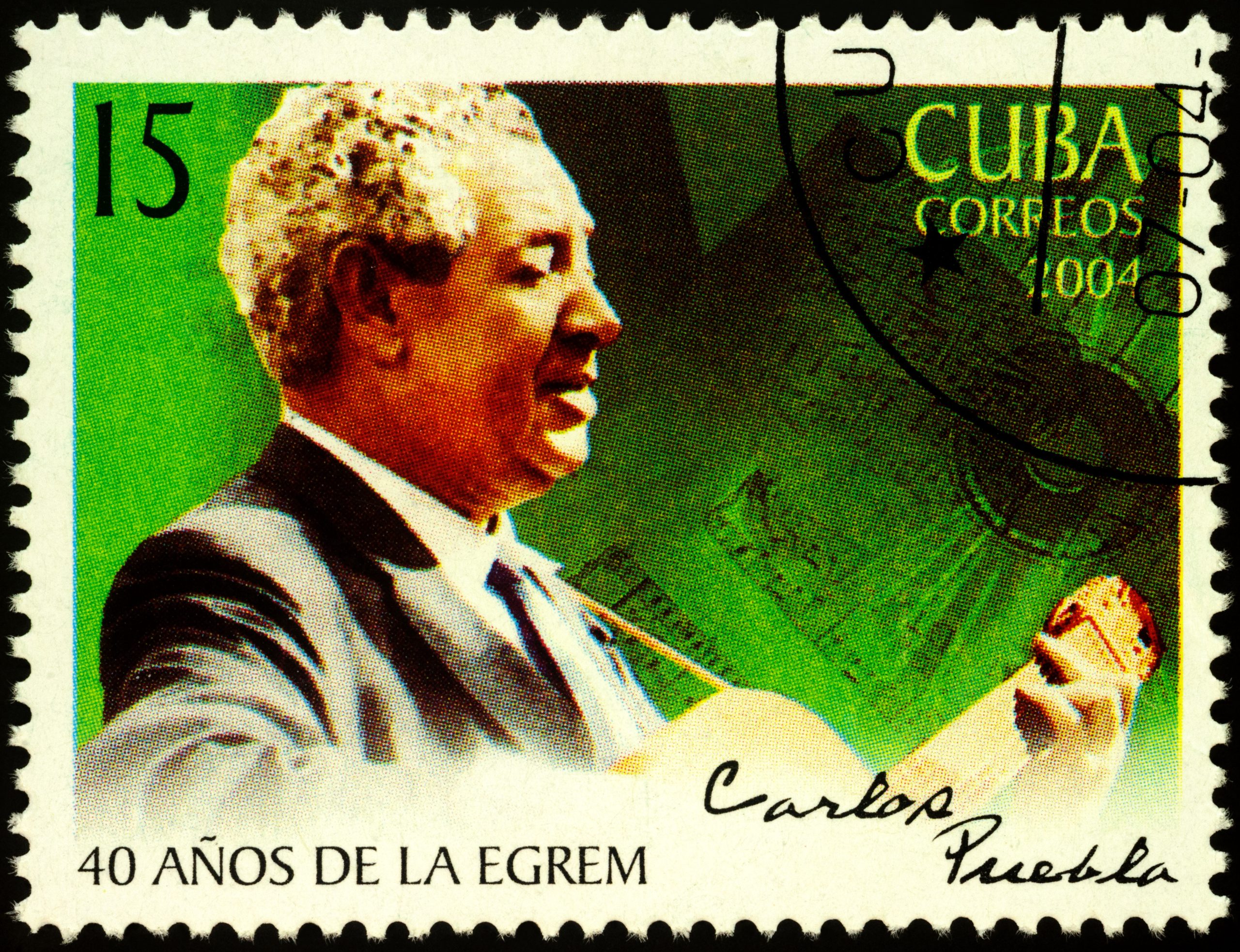
Moscow, Russia - November 11, 2019: stamp printed in Cuba shows portrait of Carlos Manuel Puebla (1917-1989) - Cuban singer, guitarist, and composer, circa 2004
EL BOLERO, PATRIMONIO CULTURAL INMATERIAL DE LA HUMANIDAD
El pasado mes de diciembre de 2023, el Bolero fue inscrito como Patrimonio Cultural Inmaterial de la Humanidad. Esta inscripción fue binacional de México y Cuba y contribuye a fortalecer su salvaguarda.
El Comité Intergubernamental para la Salvaguarda del Patrimonio Cultural Inmaterial de la UNESCO aprobó, durante su 18ª sesión celebrada en Botsuana, la inscripción de esta práctica cultural en la Lista Representativa del Patrimonio Cultural Inmaterial de la Humanidad.
El expediente binacional “Bolero: identidad, emoción y poesía hechas canción” fue presentado en marzo de 2022, conjuntamente por la Secretaría de Cultura del Gobierno de México y el Ministerio de Cultura de Cuba ante la UNESCO.
El Bolero nació en Cuba en 1883 y se fue extendiendo rápidamente por México y otros países de América Latina con esas características letras líricas, de amor, de desamor, y las percusiones acompañadas de guitarras, bajos, pianos, y voces, tanto en solitario como en grupo.
El Bolero se ha transmitido de generación en generación y es considerado portador de conocimiento, promoviendo así, la transmisión de saberes, tanto a nivel instrumental, como musical, lírico o dancístico.
Todo ello, lo han convertido en una práctica cultural que ejerce un fuerte sentido de identidad colectiva en las culturas mexicana y cubana, asociándola a un ambiente familiar y comunitario, propio de espacios de fiestas, serenatas, conmemoraciones o incluso a la vida cotidiana.
La inscripción en esta Lista es una herramienta que refuerza la salvaguarda y fomenta la creación de planes y acciones que permitan su protección y legitimación como derecho cultural y expresión de diversidad.
__
Last December 2023, the Bolero was inscribed as Intangible Cultural Heritage of Humanity. This inscription was bi-national between Mexico and Cuba and contributes to strengthen its safeguarding.
The UNESCO Intergovernmental Committee for the Safeguarding of the Intangible Cultural Heritage approved, during its 18th session held in Botswana, the inscription of this cultural practice on the Representative List of the Intangible Cultural Heritage of Humanity.
The bi-national dossier “Bolero: identity, emotion and poetry made song” was submitted in March 2022, jointly by the Secretariat of Culture of the Government of Mexico and the Ministry of Culture of Cuba to UNESCO.
The Bolero was born in Cuba in 1883 and spread rapidly through Mexico and other Latin American countries with its characteristic lyrical lyrics of love and heartbreak, and percussion accompanied by guitars, basses, pianos and voices, both solo and in groups.
The Bolero has been passed down from generation to generation and is considered a bearer of knowledge, thus promoting the transmission of knowledge, whether instrumental, musical, lyrical or dance.
All of this has turned it into a cultural practice that exercises a strong sense of collective identity in Mexican and Cuban cultures, associating it with a family and community atmosphere, typical of festivals, serenades, commemorations or even everyday life.
The inscription on this List is a tool that reinforces the safeguarding and encourages the creation of plans and actions that allow its protection and legitimisation as a cultural right and expression of diversity.
__

